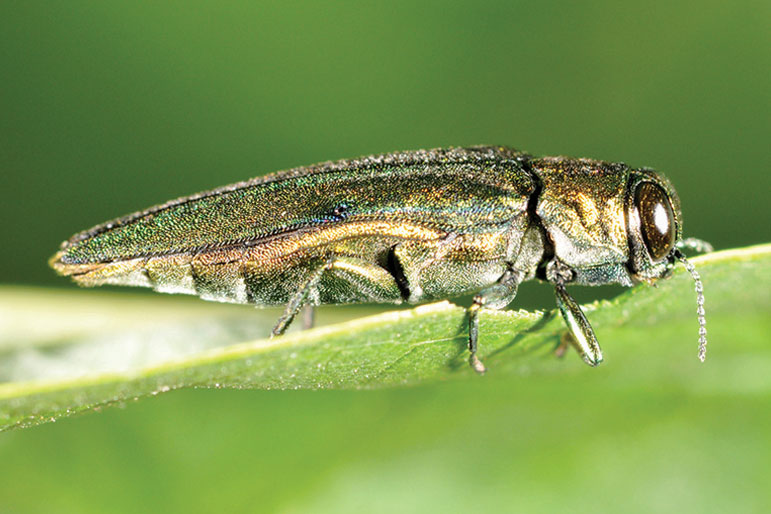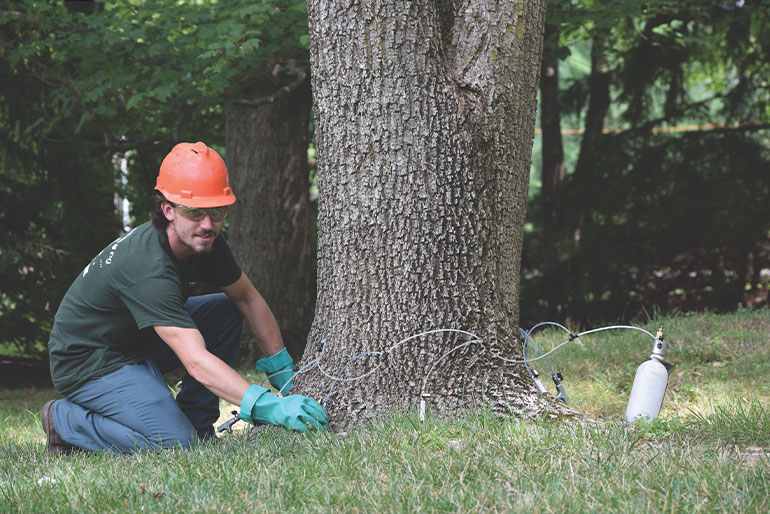

Emerald Ash Borer
There were no sightings of new populations of the Emerald Ash Borer (EAB) in the Delaware Valley in 2014. There are large, mostly unmanaged populations in Bucks County, so it is only a matter of time until EAB makes it to the Main Line. Now is the time to identify any ash trees on your property and decide if you want to protect them. There are several treatment options available; these can be effective provided you have your trees protected before the infestation wave occurs. Once EAB gets here, our choices become more limited.
Ash Rust
New Pest Threats
We are always on the watch for new threats to our region’s plants. In July 2014, the PA Department of Agriculture issued a quarantine for our region to limit the spread of Thousand Canker Disease, which affects Black Walnut. This disease is vectored by tiny bark beetles that spread a canker-causing fungus that girdles twigs until the tree dies. It is now illegal to move Walnut material (including chips, wood and firewood) out of Montgomery, Delaware, Philadelphia, Bucks, Chester and Lancaster Counties. There is no treatment to prevent or cure Thousand Canker Disease, so we hope that the quarantines work.
Also of note was the discovery of the Spotted Lanternfly last September in Berks County, its first sighting in the United States. According the Department of Agriculture, “In the U.S. it has the potential to greatly impact the grape, fruit tree and logging industries.” This unusual insect has a broad host range and could be an issue if it escapes the Berks County infestation.
This article originally appeared in the Winter 2015 newsletter - John B Ward & Co. Timely Tree Tips

English ivy, Hedera helix is an evergreen groundcover and climbing vine hardy in the Philadelphia area. Long utilized as a ground cover, the...

The Arboretum at Laurel Hill is collaborating with Cornell University to grow hybrid oak trees at their cemetery in Bala Cynwyd.
The project was...

Oak Wilt
Oak wilt has always been one of those diseases that we were happy to not have to deal with. We were aware...